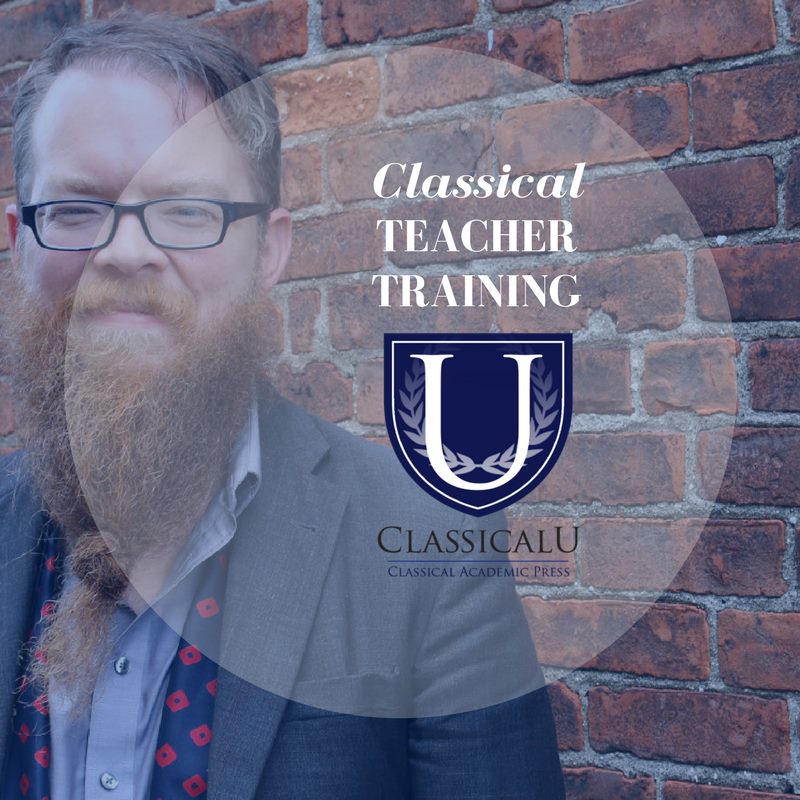by Christopher Perrin, PhD | Sep 16, 2010 | Articles, Schools & Other Organizations
Let’s face it—it is hard to speak clearly about classical Christian education. I have been studying it, implementing it and writing about it for almost 15 years and I still can become tongue-tied when someone asks me “What is classical Christian education?” I am always brushing up and revising my elevator speech.
That is why the recent article about Covenant Classical School (CCS) in Naperville, Illinois, is so remarkable. CCS is not an established school. It opened its doors barely a month ago with 87 students.
And yet journalist Jane Donahue of the Naperville Sun was able to crystallize the complex mission of CCS in a relatively short story. I am astonished that this happened. It usually takes new parents about a year to gain the kind of understanding displayed by Donahue. In her story, Donahue quotes a board member, head of school, teacher, two parents and a student. Taken together, the comments of these people tell us that Covenant Classical School:
- is a new school rooted in an old tradition
- has a classical curriculum (grammar, Latin, logic, rhetoric, music, etc.)
- employs a pedagogy appropriate to the developmental stage of students
- seeks to train students “to think, reason, read, write and speak well”
- learns from the best ideas, thinkers and literature of the past
- aims to build character: “Everyone is cheerful, friendly and thoughtful.”
- integrates biblical teaching and faith
- provides a joyful, warm environment
- develops community and strong bonds
I think this surpasses my elevator speech.
Here is the link to the article—compare it to your speech: Faith and Education Combine at Covenant
So how did the journalist figure this out? Somehow CCS has managed to pass on a clear concept of its mission to all members of its community—even a 12 year-old student. How is your school doing in this regard? We could all do worse than to take this article and seek to embody it and communicate it in our own schools. Pass this article along to your marketing director or head of school and to the board. Pass it along to your 12 year-old.
by Christopher Perrin, PhD | Sep 8, 2010 | Articles
We all have something we want to change. It might be an organization; it might be your home. All of us, if we’re honest, want to change ourselves. If you work for a school, I am sure you can create a quick list of five items you would like to change that would improve the institution.
So how do you set out to make a change? Another book by Chip and Dan Heath might change the way you think about change. They have written Switch: How to Change Things When Change is Hard, their second collaborative book. They also wrote Made to Stick, a book I enjoyed enough to make me pick up Switch.
One has to admire the way the Heath brothers write: they start with some entertaining anecdotes that illustrate the entire sweep of the book, a few stories that illustrate their premise that in order to affect change you must provide people with clear direction, ample motivation and a supportive environment. Change, they say, tends to follow a pattern and we should pay attention to that pattern. That is the heart of the book. But these three insights (seem basic don’t they?) come to life in the dozens of stories and studies that the brothers cite. Nothing is left to didactic prose. Metaphors, along with stories abound.
The brothers start their book recounting a study that showed that people will eat more popcorn if you put the popcorn in larger containers. The study showed that people eating out of large container would eat 53% more popcorn than those eating out of medium-sized container—even when the popcorn was five days old. Later on in the book the brothers cite another person who discovered that people will eat less food when it served on smaller plates. These studies point out that sometimes “what looks like a people problem is often a situation problem.” Change the environment, and you might change behavior. Certainly a good schoolteacher can tell you as much. Teachers spend a good deal of time setting up their room and creating and environment “that is conducive to learning.” Even a pleasantly-designed book (preferably a hardback) with a spacious and readable font is more likely to be read and enjoyed. I can still remember resisting several great books that came to me on crammed pages of newsprint with banal covers. The same book in hardback—where’s a comfy chair and a quiet place? What kind of books do you give your students?
The Heath brothers also cite a study that shows that people grow tired when they work for long periods exerting self-control. The study showed that a group of college students who had to resist eating freshly-baked chocolate-chip cookies became mentally drained while they instead completed an experiment in which they had to eat radishes (they were told the other group coming in would experiment on the cookies). When these cookie-resisters were asked to solve an unsolvable geometric problem as a group, they gave up after just eight minutes while the other, cookie-eating group spent nineteen minutes on the task, trying thirty-four times to solve the puzzle. The point: directly supervising your behavior is draining. Therefore what sometimes looks like resistance or laziness may just be exhaustion. Is there a school application? Sure. Think of those fidgety boys who must strain their little minds to keep pencil on paper during math class. Many are not worth teaching by 1pm, appearing lazy and disengaged. Are they simply mentally worn-out from supervising their behavior? Quite possibly. Why does recess bring them back to life? For twenty minutes they run about like mad men supervising virtually nothing. Mental strength returns.
In another place in Switch, the Heath brothers suggest that presenting others with a clear destination is crucial for motivating and leading people to change. Their first illustration features a first grade teacher who announced to her students that they would be reading as third graders (yes, third graders) by the end of the year. The teacher knew the reading standards for third grade and believed she could get the students to that level. The class, of course, was captivated and energized. They rallied to this noble goal and learned that they were scholars and addressed each other as such. A scholar, they learned, was easy to define: “A scholar is someone who lives to learn and is good at it.” At springtime her class was reading at second grade level and she held a graduation ceremony for them. By the end of the year, 90% of the class was reading at the third grade level. The Heath brothers maintain that a clear, ambitious goal (reading like third graders) united this class and dissolved their resistance to change. Does your school (or class, or leadership team) have a clear picture of the destination you seek? Can you define the character, knowledge and skill a graduate of your school should possess? Clearly, in writing?
The classical Christian educator might point out that lasting change comes from the heart of a child that is led to love God and neighbor. Furthermore, shouldn’t we be skeptical of change that is based on changing the environment? I found nothing Switch that contradicted changes that comes from spiritual transformation. But change as a broad concept cannot be reduced only to the spiritual dimension as profoundly important as that dimension is. And who can deny that our environment does contribute to our disposition, mood and work? The Heath brothers do not argue that change is determined by environment, just that it is one important factor that shapes change—along with other factors. The Heath brothers bring to us something akin to the wisdom literature of Scripture—they have observed practical ways humans are motivated, influenced and conditioned to change. We might read in the Proverbs that “the plans of the diligent lead to profit as surely as haste leads to poverty” (Pr. 21:5). The Heath brothers also reduce their findings to some proverbial expressions: What looks like a people problem is often a situation problem. What looks like laziness is often exhaustion. Clarity dissolves resistance.
Switch just might do more that suggest some proverbial change for your school. It might help you change as well.
by Christopher Perrin, PhD | Aug 26, 2010 | Articles
Here is a brief article I wrote for the Colson Center…recasting an insight from C.S. Lewis. Both science and theology have poetic elements.
The Poetry of Science and Theology
by Christopher Perrin, PhD | Aug 20, 2010 | Education for Fun
When my children were younger I introduced them to Shakespeare by reading them several of the prose renditions (of Shakespeare’s plays) by Charles and Mary Lamb from their collection Tales from Shakespeare, first published in 1807. They very much enjoyed the stories, which are literary achievements in their own right, and were better prepared for the study of Shakespeare himself in their later education. Here is an audio recording of The Comedy of Errors by Charles and Mary Lamb. Gather your young ones around and see if they don’t enjoy it as mine did.
Comedy of Errors
by Christopher Perrin, PhD | Aug 19, 2010 | Education for Fun
Just for fun…here is one of the most profound chapters from the New Testament in Latin….
John 1 in Latin: Classical Pronunciation







